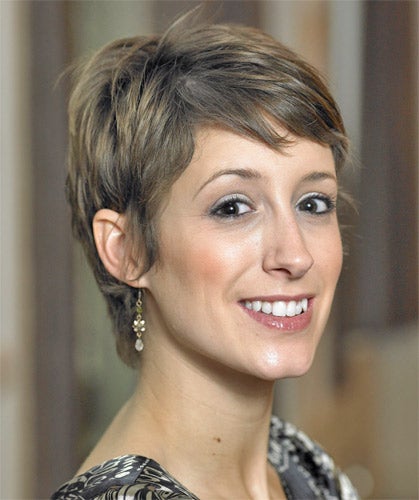How do you solve a problem like damaged vocal cords?
Connie Fisher's plight highlights occupational hazard for singers

The West End star Connie Fisher is not the first singer who has had their career cut short by difficulties with the voicebox, but she is rare in having a problem that has almost certainly been with her since childhood.
Ms Fisher, 28, was forced to drop out of her leading role of Maria von Trapp in The Sound of Music because she suffers from a congenital disorder of the vocal cords, for which she had surgery in April 2009.
The singer, who in 2006 won the BBC1 talent contest How Do You Solve a Problem Like Maria?, admitted that her vocal range had "altered dramatically" recently, with the result that she has had to drop out of the West End version of the musical at the London Palladium.
Commentators have pointed to the similarities with Julie Andrews, the original Maria in the 1965 award-winning film, who also had to retire because of problems with her vocal cords. But Ms Andrews' difficulties were related to the growth of non-cancerous nodules on the cords, and an operation that left her bereft of her trademark, crystal-clear tones.
In the case of Ms Fisher, the problem was a disorder known as sulcus vocalis. Instead of a smooth surface on the leading edge of the two vocal cords, Ms Fisher developed a groove which in effect creates two edges where there should be one.
The vocal cords consist of two folds of skin that come together and vibrate when air is blown through them.
A set of complex muscles and nerves is able to control the movements of the vocal cords with extreme accuracy, enabling the generation of the complicated sounds needed for speech and song.
Ms Fisher said she had been battling with her problem for many months and finally decided to give up singing because her musical range had altered so dramatically.
In fact, Ms Fisher has probably been dealing unwittingly with the problem for longer that she has realised. Many people with congenital sulcus vocalis are able to compensate for it by adapting the use of the vocal muscles, according to Martin Birchall, professor of laryngology at the Royal National Throat, Nose and Ear Hospital in London. "They are able to recruit muscles not normally used. One of the problems they face is that the groove creates two vibrating edges in the vocal cords, which causes the generation of two sounds or tones. It is a form of hoarseness," Professor Birchall said.
"Clearly, she has been compensating for this but anyone with this condition who uses the voice intensely will tire our their muscles. They need a lot of 'downtime' to give their muscles some rest," he said.
It is possible to have corrective surgery to fill in the groove, but like any medical intervention it carries risks and does not always work.
"It is very difficult to correct and the operation has to be done under a microscope because the vocal cords are relatively small," Professor Birchall said.
Ms Fisher's problem is quite different to the development of nodules on the vocal cords. These growths come about rather like the hardened calluses on a workman's hands, when skin is subjected to heavy physical contact.
Nodules are a frequent problem with rock singers who are not trained in the same way as opera singers and tend to shout rather than using their chest muscles to create loud sounds.
Nodules on the vocal cords mean the two vibrating edges do not meet in the middle as they should, according to John McMurray, English National Opera's head of casting. Voice training can help prevent them forming, but this is no guarantee.
"They tend to come from overuse or strain: people singing things that make them tired," Mr McMurray said.
"The problem tends to come if you have a less-than-perfect technique. That's when you get wear and tear. Rock singers get it more because they shout a lot. They are delicate things, vocal cords," he said.
Other suffering singers
Justin Timberlake When recording Signs, his 2005 collaboration with Snoop Dogg, the former member of N-Sync was found to have a long-standing throat condition. He was admitted to hospital to have vocal nodules removed. He made a full recovery but was left unable to sing or speak loudly for several months.
Placido Domingo The three tenors became the two tenors and a baritone when, in 2007, Placido Domingo announced he was switching vocal repertoires. Ageing frequently affects the quality of the voice and, over his 50-year long career, his had deepened audibly, assuming a darker timbre.
Elton John The singer lost his voice while on tour in 1986. He underwent surgery for the removal of several non-cancerous polyps and rested – cancelling dates for a tour the following year. His voice became lower in pitch as a result.
Join our commenting forum
Join thought-provoking conversations, follow other Independent readers and see their replies
Comments